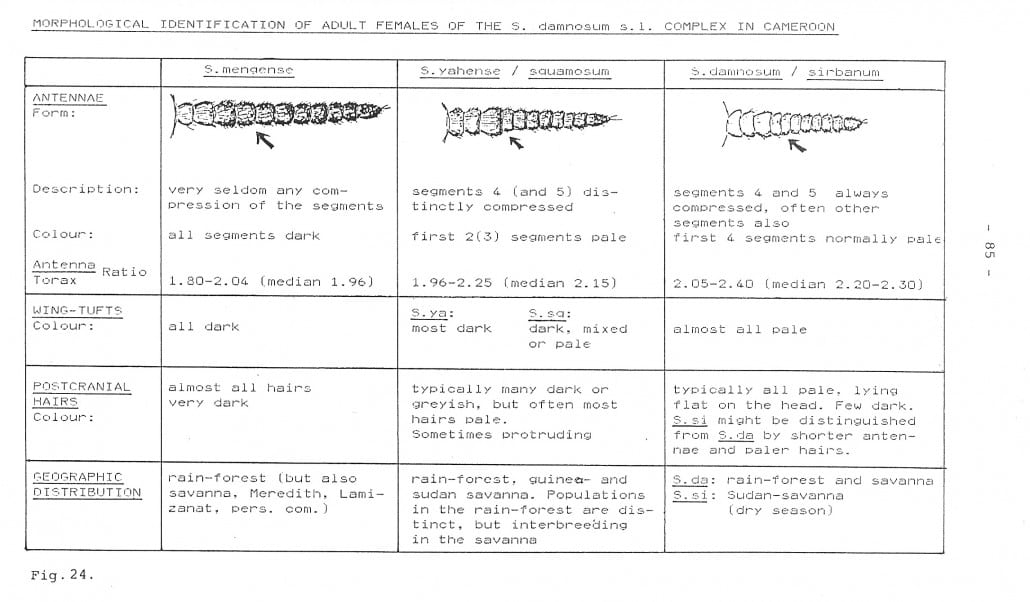Adult Simulium morphology
The sibling species within the group Simulium damnosum sensu lato have been described by cytotaxonomy of inversions in the polytene chromosomes of their larval salivary glands. Such a differentiation became necesary, because these species differ in their ecology and in their potential to transmit Onchocerca volvulus. The adult stages however are difficult to distinguish on the basis of their morphology.
In order to distinguish the adult female flies, the length, colour and shape of the antenna can be used as a criterium, in combination with the colour of post-cranial setae and the number of pale and dark hairs in the wing-tufts. Three species-groups can be separated in West- and Central Africa (see table below):
Simulium damnosum sensu stricto and S. sirbanum in the savanna,
S. squamosum (savanna and forest types) and
S. soubrense / S. sanctipauli /S. mengense in the forest.
=> read more RENZ-Togo-1982-Morphological-criteria-Simulium-damnosum



Leave a Reply
Want to join the discussion?Feel free to contribute!